Are you planning to visit Iceland in February? Here’s everything you need to know!
Take a February trip to Iceland and enjoy the Northern Lights, snowy landscapes and fantastic Nordic culture.
It’s an off-peak time to visit, but I think that February is a fantastic time to visit Iceland.
I recently went to Iceland for a winter trip in February, and here are the best reasons to visit in late winter!
I’ve been to Iceland in winter twice, but my February trip was hosted by Jet2 Holidays, with some activities hosted by Visit Iceland. All opinions are my own.
Why visit Iceland in February?
Visit Iceland in February to see the Northern Lights, snow, whale watching and even skiing!
Here are my favourite things about February in Iceland.
Chance to see the Northern Lights
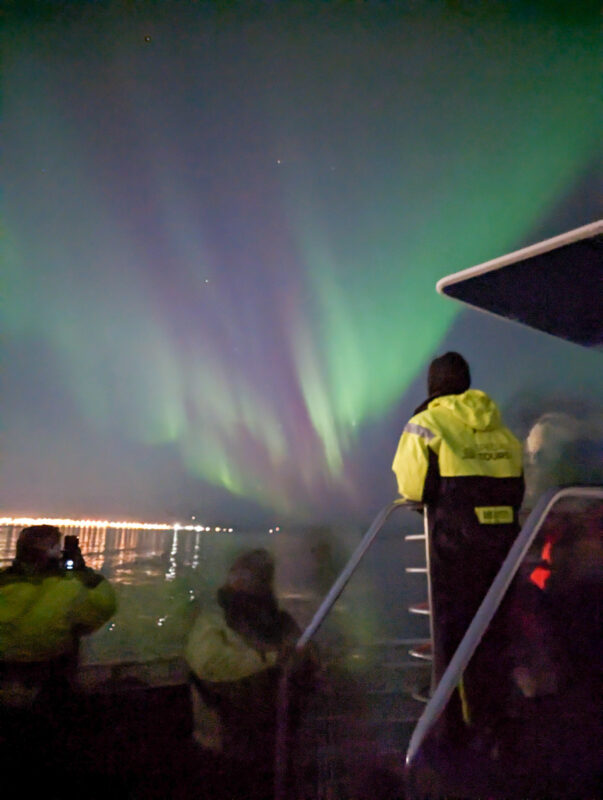
If you visit Iceland in February, you may well witness one of nature’s most extraordinary displays: the Northern Lights, also known as the Aurora Borealis.
During this month, the nights are still long enough for dark skies – which means that the lights paint their colours across the sky.
To maximize your chances of seeing the Northern Lights, consider venturing outside of Reykjavik – either on a bus or boat tour or by renting a car.
The light pollution in the city can obscure the clarity of the Northern Lights.
Popular Northern Lights watching spots include þingvellir national park, which is just an hour’s drive from the capital, Westfjords or the area around Vik.
Timing is everything when it comes to the Northern Lights. The best hours are typically between 9pm and 2am, with activity peaking around midnight.
However, this natural phenomenon is unpredictable, and its visibility strongly depends on solar activity and cloud cover.
So do check the aurora forecast and cloud cover predictions regularly during your stay. Websites and local meteorological services offer updated forecasts that can help to plan!
Remember to dress warmly, as nights can be cold – especially inland.
Layers of thermal clothing, a windproof jacket, warm hats, gloves, and waterproof boots are essential to keep you comfortable!
Northern Lights tours include transport, a guide, warm drink and overalls.
Personally, I think that the best way to see the lights is on a boat trip in the Icelandic waters from Reykjavik harbour.
I didn’t actually see the Northern Lights on my February trip to Iceland (they’re fickle!), but I did see them when I visited Iceland in January.
It’s not the coldest month
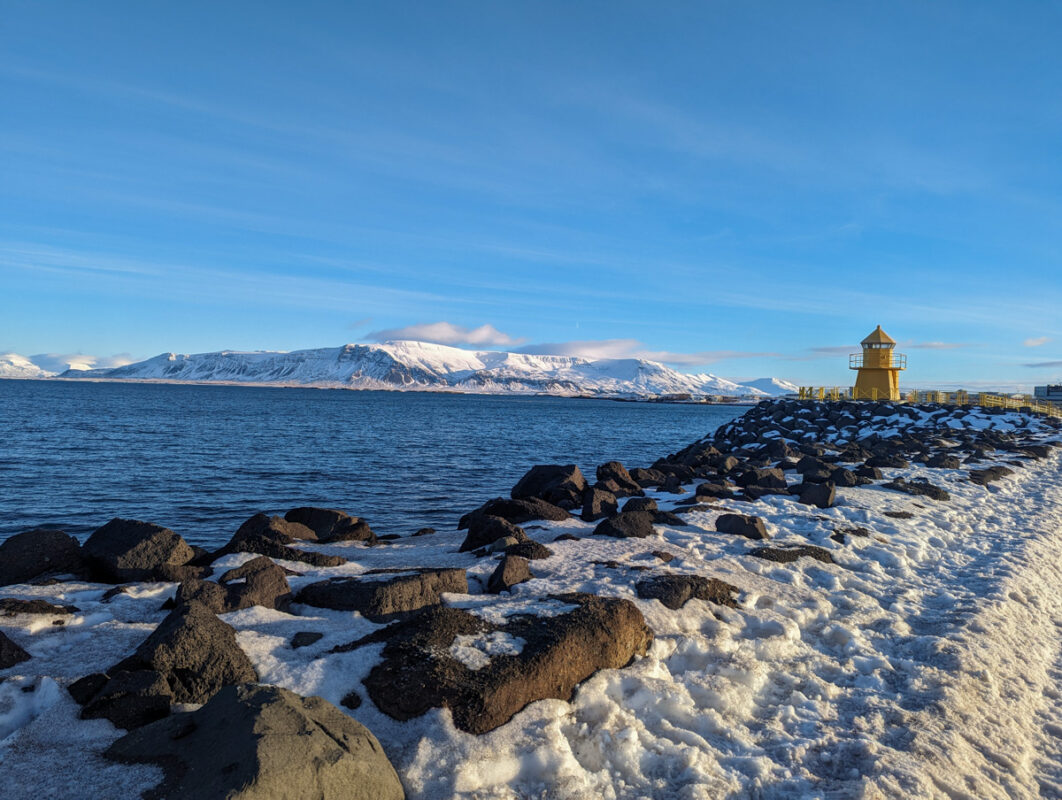
While it’s chilly, February isn’t actually the coldest month in Iceland!
In February, the average temperature hovers around -1°C to 3°C (30°F to 37°F) and is slightly milder than in January and December.
So, while you’re definitely looking at chilly temperatures, Iceland’s weather isn’t quite as dramatic in February!
This slight uptick in temperatures means that you’re less likely to encounter the extreme cold, especially if you visit at the end of the month.
This means outdoor excursions and sightseeing can be more comfortable and enjoyable!
That said, weather conditions can often be temperamental, with plenty of snow showers, especially inland. Be mindful of road conditions if you’re driving around Iceland.
There are more hours of daylight

February in Iceland marks a turning point – the short days gradually lengthen and, at the end of the month, there are 10 hours of sunlight! What does this mean? More time to spend outdoors!
At the beginning of February, you can expect around 7 hours of daylight, a significant increase from the mere 4 to 5 hours in December.
By the end of the month, daylight extends to approximately 10 hours – so if you want more light, visit at the end of the month.
This not only brightens the mood but also widens the window for outdoor activities – it gives more flexibility in your itinerary!
Plenty of winter activities

February in Iceland is wonderful for winter enthusiasts – here are some of the best things to do in Iceland in February!
- Snowmobiling on Glaciers: Snowmobiling tours on Iceland’s glaciers are unparalleled! Tours typically operate on Langjökull or Vatnajökull.
- Ice Cave: February is an ideal time to explore Iceland’s stunning ice caves, with their ethereal blue interiors. These natural wonders are most stable and accessible during the winter months.
- Hot Spring Soaking: After a day of cold weather, there’s nothing quite like relaxing in one of Iceland’s many geothermal pools or heated outdoor pools. The Blue Lagoon and the Secret Lagoon are popular choices, but there are countless other lesser-known spots where you can enjoy the warm, mineral-rich waters amidst snow-covered landscapes.
- Horseback Riding: Experience the Icelandic countryside on a unique breed of horse known for its sturdy build and smooth gait. Horseback riding tours in February take you through stunning winter scenes, from frozen lakes to snow-draped lava fields.
- Northern Lights Hunts: With its long nights, February remains one of the best months to witness the aurora borealis. Many operators offer Northern Lights tours, taking you away from city lights to locations known for clear skies and good visibility. These tours often provide photography tips too!
Iceland’s beautiful under a blanket of snow
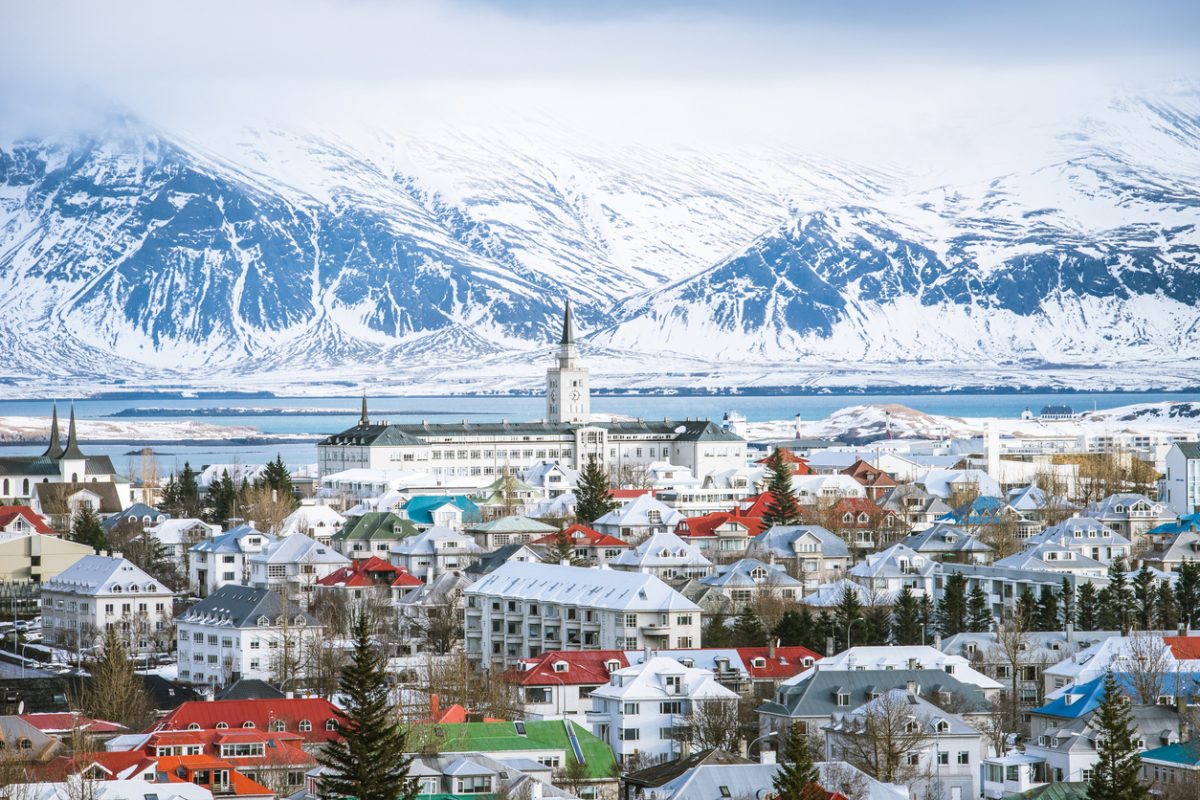
Many attractions on the ring road including the Golden Circle and on the south coast, are even more beautiful underneath snow! In fact, this time of year is a great time to visit due to the scenic beauty that snow brings!
I prefer visiting Iceland in the winter season just because I think it’s natural beauty is more scenic when the weather’s snowy!
Possibility to see whales

February’s an excellent time to see marine life in North Atlantic Ocean.
The cold, nutrient-rich waters around the island become a favoured gathering spot for various whale species, making this month especially rewarding for those hoping to catch a glimpse of these magnificent creatures.
You have the opportunity to see a variety of whale species, including the acrobatic humpback whale, the minke whale, and occasionally, the colossal blue whale. Orcas, also known as killer whales, are spotted more frequently during this time, especially in the Westfjords and near the Snæfellsnes Peninsula.
Whale watching in February means braving the cold maritime climate, so dress in warm, waterproof clothing.
Operators often provide warm overalls and hot drinks, but wearing layers, including thermal wear, will keep you comfortable throughout your adventure. Binoculars can enhance your viewing experience, and cameras are a must to capture the breathtaking moments when a whale breaches the surface.
You can go skiing!
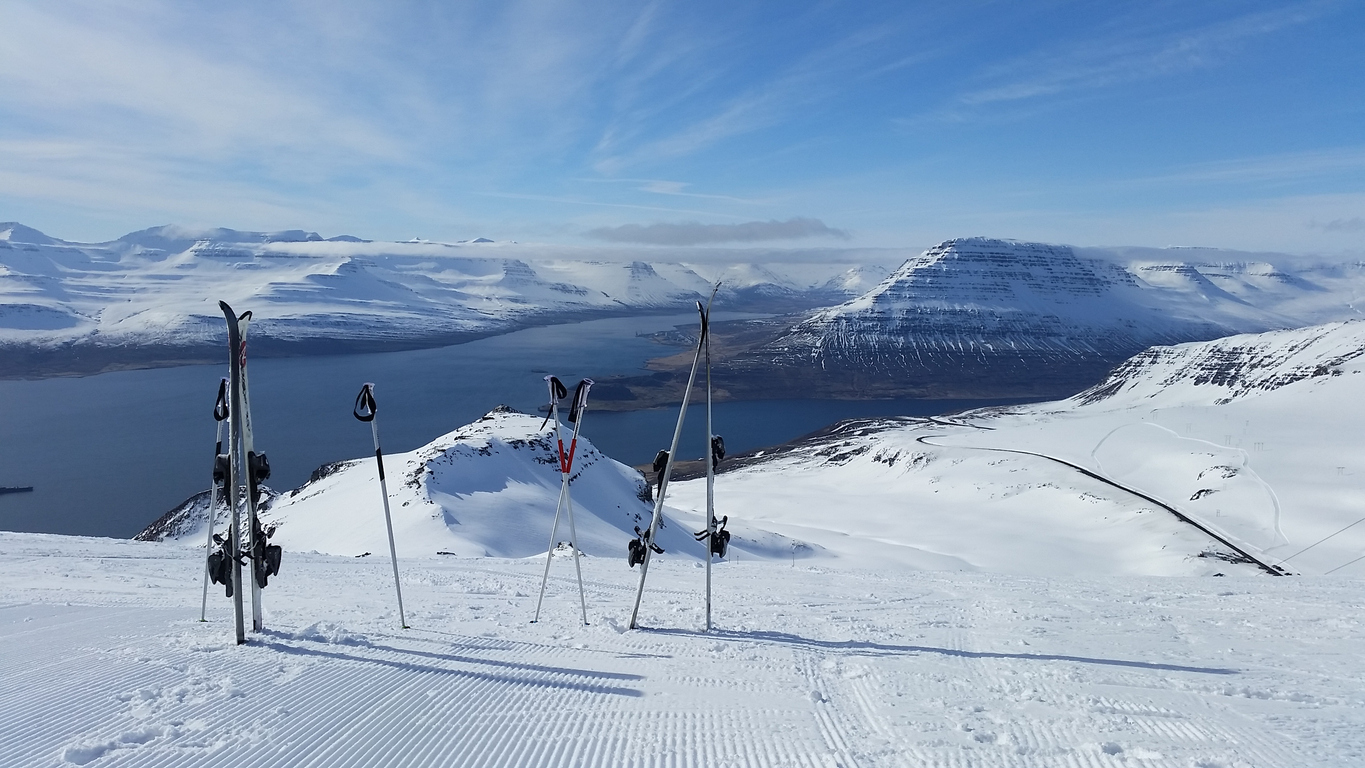
As February is one of the coldest months of the year, skiing is still very much possible!
There are a couple of places to ski near Reykjavik.
Bláfjöll ski resort and Skálafell ski resort are both just a short drive from Reykjavik city centre. Iceland’s ski resorts might not be as renowned as the rest of Europe’s, but they’re well equipped for a short ski trip!
It’s a romantic place to celebrate Valentine’s Day
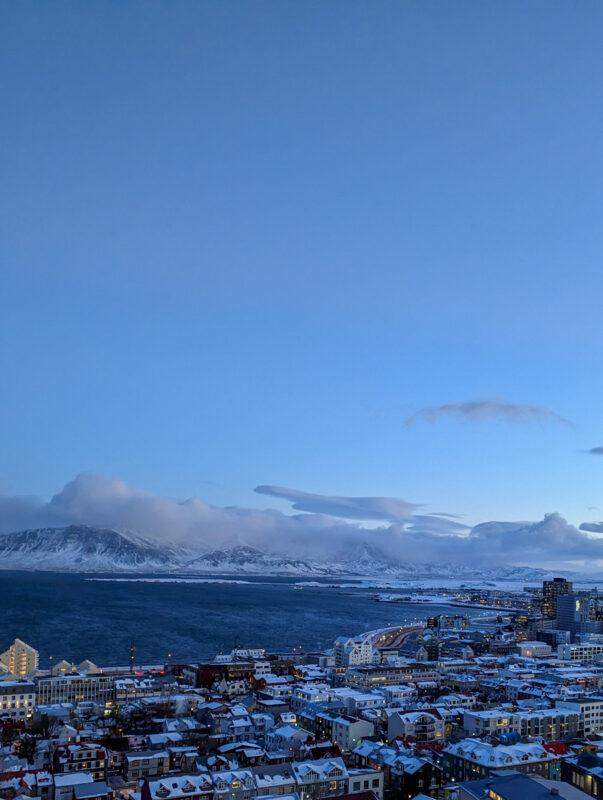
The month of February is Valentine’s Day – and where better to celebrate than in the gloriously romantic country of Iceland?
The staggering nature is immensely romantic, as is the soft winter light.
Plus, there are plenty of restaurants in the city for a romantic dinner! Our favourite was Kopar.
Winter Lights Festival
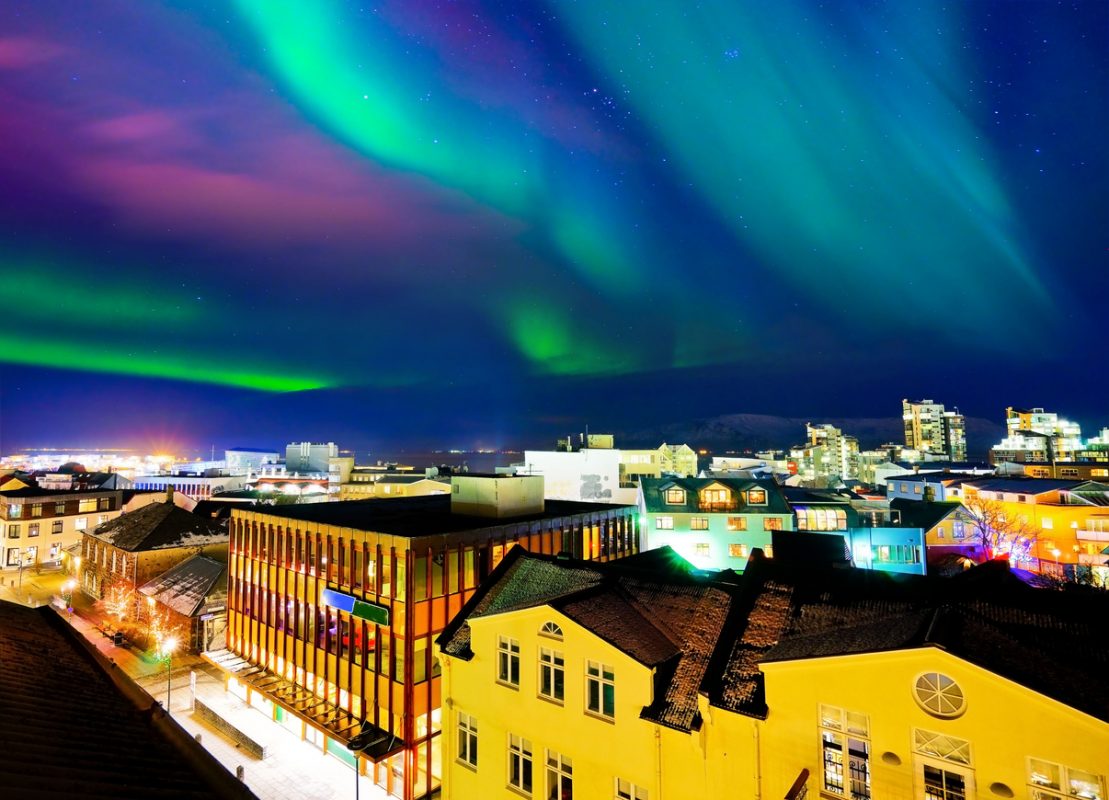
The Winter Lights Festival in Reykjavik happens in February and is an ode to the Northern Lights. Streets and landmarks become stages for light art that invites admiration and interaction.
The festival has a program packed with activities ranging from museum nights and thermal pool parties to guided city walks, each illuminated under the festival’s glow.
It happens in early February each year.
What to wear in Iceland in February?
The main thing to remember for Iceland in February is warm clothes! February weather is still quite chilly, although the gulf stream prevents Reykjavik and the south east from getting too cold.
Pack plenty of jumpers, thermals and waterproof boots, as you’ll likely still see some snow (especially if you’re visiting in early February).
The wind chill can be strong, with high winds frequently occurring, so remember a windbreaker.
Plus, if it doesn’t snow, it’ll likely rain, so be sure to bring a high-quality rain jacket!
Are you ready to visit Iceland in February?
Whether you’re looking for the Northern Lights, romantic vibes in Reykjavik or keen to try out some snowports, Iceland’s fantastic in February.
Take a look at my full weekend in Reykjavik itinerary here.
